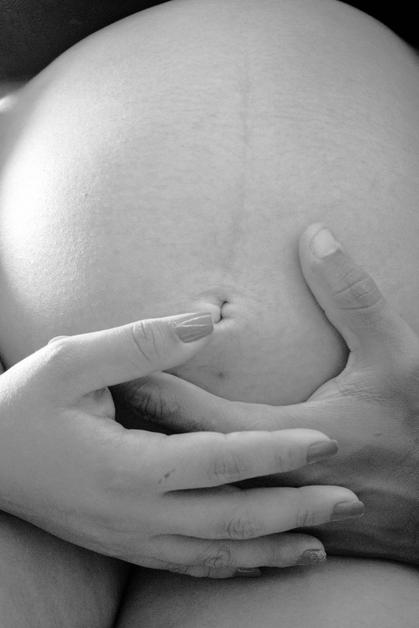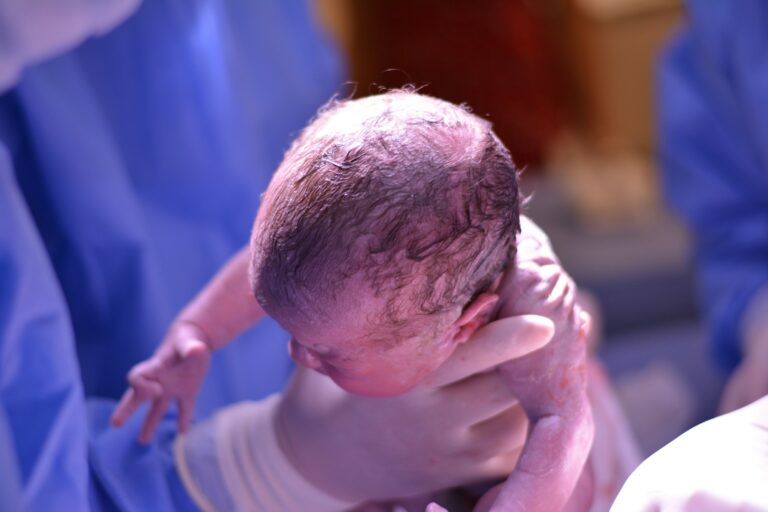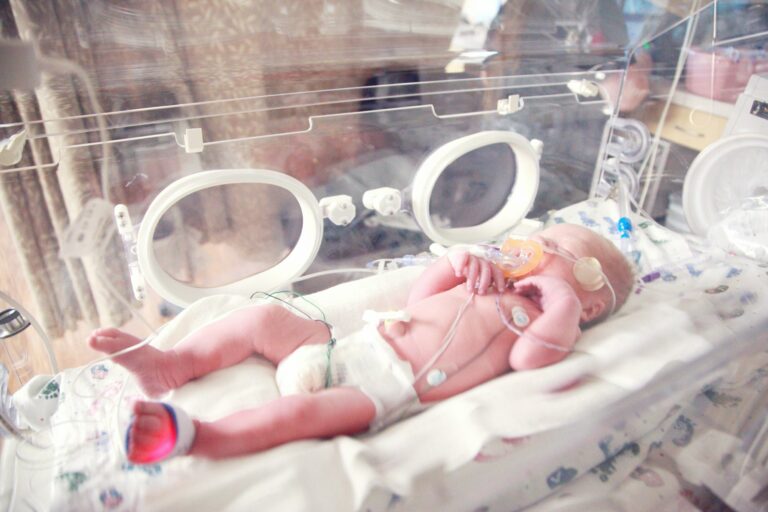Pregnancy—an experience as wondrous as it is unpredictable—unfolds with a blend of joy and, undeniably, a cascade of uncertainties. One question often nudges at parents’ minds: “Is this lower abdominal pain during pregnancy something I should expect, or is it a sign to worry?” Thoughts may race at the slightest twinge or cramp: an innocent symptom of the uterus expanding, perhaps, or the harbinger of a complication. What exactly signals “normal” adjustment, and what should prompt a call to the doctor? If such worries swirl in your head, know that clarity exists—grounded in science, attentive to every nuance of your experience. From physiological shifts to conditions urging prompt care, from practical relief to key warning signs, here’s what you deserve to know.
Why does lower abdominal pain during pregnancy occur? Understanding your body’s transformation
The journey begins with profound anatomical and hormonal shifts. The uterus, once nestled quietly in the pelvis, gradually stretches—sometimes dramatically—to create a nurturing space for your baby. This physical expansion tugs on ligaments (chief among them, the round ligament) and connective tissues surrounding the womb. Picture a taut rubber band, gently lengthening as your belly grows. Fast or sudden movements? Those might spark a sharp ache on one or both sides, a textbook example of round ligament pain—brief but surprisingly intense.
But the orchestra of changes is bigger. Pregnancy hormones, especially progesterone and relaxin, soften the pelvic ligaments and slow digestion (a perfect recipe for bloating and constipation). As abdominal muscles adapt, posture shifts as well, sometimes resulting in an aching lower back and cramps that ebb and flow with every new trimester.
Add to this: increased blood flow, pressure on organs, and even gentle practice-contractions (the famous Braxton-Hicks). It’s no wonder that lower abdominal discomfort weaves in and out of daily life during pregnancy.
Typical causes of lower abdominal pain during pregnancy: when it’s normal and when it’s not
1. Physiological (common and expected)
- Ligament and muscle stretching: When standing, moving quickly, or even sneezing, you might notice a fleeting pain. This is often ligaments doing their job—expanding in response to the growing uterus.
- Round ligament pain: Common from the second trimester onward. Quick positional shifts—getting out of bed, twisting suddenly—might set off short, stabbing sensations.
- Braxton-Hicks contractions: Irregular, variable in intensity, these “practice” tightenings do not initiate true labour but imitate its early rhythm.
- Digestive woes: Constipation, bloating, and gas cluster together, driven by slower gut movement and uterine pressure. It’s classic, though not exactly comfortable.
- Activity and posture-related aches: Fatigue, physical exertion, and altered posture will test both abdominal and back muscles, prone to spasms or cramps after a busy day.
2. Pathological (signals not to ignore)
A handful of causes warrant fast attention. Why? Because lower abdominal pain during pregnancy, if linked to other symptoms, can spotlight something more significant:
- Urinary tract infections (UTIs): Symptoms include pelvic pain, frequent urination, burning during urination, or fever. Even mild discomfort should be checked, as untreated UTIs may progress rapidly.
- Ectopic pregnancy: A pregnancy developing outside the uterus (often in a fallopian tube) brings severe, one-sided pain—perhaps with vaginal bleeding, nausea, or dizziness. This needs immediate intervention, typically early in pregnancy.
- Threatened or ongoing miscarriage: Strong cramps and vaginal bleeding—especially in the first trimester—might indicate pregnancy loss. Urgency is essential.
- Placental abruption: If the placenta starts detaching before the baby is ready to be born, sudden, severe pain (sometimes with bleeding) may arise in later pregnancy.
- Preterm labor, preeclampsia, other complications: Sometimes, lower abdominal pain is part of a constellation—backache, swelling, visual changes, high blood pressure—heralding more serious conditions that require expert assessment.
3. Other medical reasons
- Ovarian cysts or adnexal torsion: Pain that is acute, localized, sometimes with vomiting or nausea.
- Appendicitis: Starts subtly, often circling the belly button before moving to the lower right side, with persistent tenderness or fever.
- Gastrointestinal infections, kidney stones: These may deliver cramps, vomiting, or radiating pain toward the groin.
Symptoms often associated with lower abdominal pain during pregnancy
How does your pain unfold? Specific details can reveal a great deal:
- Vaginal bleeding—from light spotting to a heavier flow, especially if paired with cramps or dizziness.
- Fever, chills—potential red flags for infection.
- Abnormal vaginal discharge—greenish, foul, or pus-like.
- Reduced fetal movement—a marked decrease, especially after the second trimester.
- Urinary pain—burning, urgency, blood in urine.
- Dizziness, fainting—signals of blood loss, infection, or another concern.
Pause and reflect: does your pain travel with these companions? If yes, a consultation is best.
Pain and discomfort across pregnancy: trimester by trimester
First trimester
- Expected: Implantation cramps (short-lived, mild), gentle tugging as the uterus begins its upward quest.
- Concerning: Sharp one-sided pain with bleeding, fainting, or dizziness—think ectopic pregnancy, miscarriage, or UTI.
Second trimester
- Expected: Round ligament stretches, mild pelvic cramps, tugs from muscles adapting to new shapes.
- Concerning: Persistent, strong, or recurrent pain. Symptoms of pre-eclampsia—headache, vision changes, severe swelling—should prompt attention.
Third trimester
- Expected: Braxton-Hicks, continued stretching, and the general bulk of the belly creating pressure.
- Concerning: Regular, intense contractions before week 37 (risk of preterm labor), sudden, severe pain and/or bleeding (think placental abruption), strong headaches, or vision troubles.
How do healthcare providers diagnose the cause of lower abdominal pain during pregnancy?
Doctors act a bit like detectives—questioning, assessing, and narrowing down causes:
- History-taking: When did it begin? How intense? Where exactly? Are there triggers or soothing factors?
- Physical examination: Checking for tenderness, swelling, changes in blood pressure, heart rate.
- Ultrasound: Offers a literal window inside, checking baby’s wellbeing, uterus, placenta, and even ruling out ectopic pregnancy.
- Laboratory tests: Urine analysis (to detect UTIs), bloodwork (infection, anemia, hormone levels).
- Additional tests: Sometimes, further imaging or review is needed if appendicitis, ovarian torsion, or kidney stones enter the suspicion list.
Speed and accuracy of identification matter. If a new symptom appears or something feels “off,” clear communication with your doctor is essential.
Practical relief: easing lower abdominal pain during pregnancy (at home and with medical help)
Home solutions for everyday pain
- Rest and gentle activity: Take breaks when needed. Slight movement or stretching can prevent stiffness, but avoid dramatic shifts or sudden twisting.
- Postural support: Prop yourself with extra pillows at night, especially under the belly or between knees. During the day, conscious posture reduces strain.
- Warmth helps: A warm compress (wrapped, never hot) on the belly may offer comfort.
- Hydration and light diet: Water, high-fibre foods, and small frequent meals keep digestion healthy, reducing constipation and bloating.
- Moderate exercise: Gentle prenatal yoga, slow walks, and stretching keep muscles and ligaments limber.
- Support garments: Consider a pregnancy belt for added support.
- Self-care rituals: Slow breathing, mindfulness, and rest periods—caring for your body and mind together.
When medical support is needed
- UTIs: Usually treated with safe antibiotics.
- Pain relief: Paracetamol is generally considered safe, but always check dosage and appropriateness with your doctor.
- Severe conditions (ectopic pregnancy, preterm labor, placental abruption): May require hospitalization, surgery, or specific medical interventions to safeguard you and your baby.
Self-medication? Not advised. Persistence or escalation in symptoms? Never hesitate to reach out.
Warning signs: when is lower abdominal pain during pregnancy a red flag?
Fast action is required if you notice:
- Sudden, intense, or unrelenting pain
- More than light vaginal bleeding
- Fever, chills
- Marked drop in baby’s movements
- Faintness, dizziness, profound weakness
- Greenish, foul, or copious discharge
- Severe headache, vision changes, swelling
Prompt medical evaluation can bring immense peace—and protection.
Prevention: can lower abdominal pain during pregnancy be avoided or minimised?
Some practical habits make a difference:
- Attend prenatal consults and don’t skip routine checks.
- Stay hydrated and focus on a fibre-rich, balanced diet—prevents much of the digestive disturbance.
- Gentle activity—walking, stretching—keeps circulation and digestion optimal.
- Early treatment of infections: Report urinary symptoms promptly, even if mild.
- Adopt supportive posture for all-day comfort, whether standing, sitting, or sleeping.
- Break up long periods of standing or work with regular pauses.
- Pay attention to the body’s signals: Small adjustments each day—hydration, warmth, rest—truly add up.
When and how should you consult a healthcare provider?
Medical input is wise when you face:
- Strong, recurrent, or prolonged lower abdominal pain during pregnancy.
- Pain alongside bleeding, fever, weird discharge, burning urine, fainting.
- Abrupt change in fetal movement, or any new worrying sign.
- Symptoms of early labor—tightenings, pelvic heaviness, backache before 37 weeks.
Help your care team help you: describe exactly what you feel, list any associated symptoms, and mention any new medications or switches in day-to-day health. Expect urine tests, perhaps a blood sample, or even an ultrasound. Rapid, clear communication brings reassurance and the right interventions—sometimes questions save lives.
Key Takeaways
- Lower abdominal pain during pregnancy is almost a universal experience—driven by ordinary physiological changes or, less commonly, medical complications.
- Chart any pain’s pattern, intensity, and companions (like bleeding or fever). Remember, context reveals most of what you need to know.
- Don’t ignore warning signs: act on severe pain, heavy bleeding, infection symptoms, or abrupt changes in your baby’s activity.
- Give priority to gentle movement, hydration, nutrition, rest, and posture to ease minor discomfort safely at home.
- Trust in your support network—health professionals stand ready to listen, assess, and guide you through each phase.
- For tailored advice and free health questionnaires for your child, you can always download the Heloa app.
Questions Parents Ask
Can lower abdominal pain during pregnancy feel like period cramps?
Absolutely. Many parents experience period-like cramps during the early weeks, usually from the normal stretching and growing of the uterus or ligaments. This sensation might seem familiar, bringing memories of pre-pregnancy cycles. If the pain is mild and brief, it’s often a sign of natural changes. However, if cramps become intense, stubborn, or come with bleeding, best to check with your doctor for reassurance and guidance.
Is lower abdominal pain during pregnancy ever a sign of miscarriage?
It’s natural to worry, especially when new aches appear. Lower abdominal pain alone is usually not alarming, as harmless causes abound, but when such pain is mixed with vaginal bleeding—especially heavier spotting or tissue—it can suggest a miscarriage, particularly in the first trimester. Still, fleeting pain or ordinary cramps most commonly mean nothing serious. For persistent or severe pain with bleeding, consult your healthcare provider right away.
When should I worry about lower abdominal pain during pregnancy?
Mild discomfort, occasional cramps, or brief sharp stabs are par for the course, but any symptoms that disrupt your day—pain that’s severe, ongoing, or tied to fever, chills, urinary difficulty, or abnormal discharge—should prompt a medical consult. If pain comes with dizziness, fainting, or lessened fetal movement, act swiftly and seek help. Your comfort with your own body is important: never hesitate if you have questions or concerns about new or changing sensations.
Further reading:









